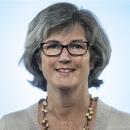L.A. Moves to Handle a Disaster Like Chernobyl’s
- Share via
Calling it essential to “apply the lessons of Chernobyl,” Los Angeles Mayor Tom Bradley asked UCLA bone marrow specialist Dr. Robert Gale on Friday to pull together an emergency medical team that would be ready to immediately respond to victims of a nuclear power plant accident.
In a letter to Gale, who led a team of UCLA doctors to Moscow to treat radiation victims after the April 26 Chernobyl disaster, Bradley said Los Angeles “cannot afford to wait” for state and federal agencies to update safety procedures.
“We must act to incorporate the new information into our own emergency procedures as quickly as possible,” Bradley wrote.
Parallel Drawn
Bradley drew a parallel between the distance separating Chernobyl and the closest large Soviet city of Kiev--about 60 miles--and the roughly 75 miles that separate Los Angeles from the nearest nuclear power plant, the Southern California Edison installation at San Onofre near the Orange-San Diego county line.
“Recent events remind us that radiation clouds respect no geographic or political boundaries,” he wrote.
The emergency medical team plan developed out of discussions between Bradley’s staff and Gale and other doctors involved in the Chernobyl effort. Deputy Mayor Tom Houston said the doctors volunteered to put together an emergency preparedness plan.
According to Bradley’s letter, the team would include medical volunteers “prepared to swing into action in the event of a nuclear power accident anywhere in the country.”
The team would compile either a list of facilities where it could take victims for treatment or a list of specialized medical equipment that they could transport to an affected area immediately after an accident.
Based in L.A.
While the team would be based in Los Angeles, because of the UCLA doctors, it would be able to respond to nuclear accidents anywhere in the world, Houston said. “These are the only gentlemen who have experience,” he said, “This is not something you can learn from the ground up.”
Edison officials, told of the Bradley letter by a reporter, said the plan would appear to complement existing evacuation procedures for the San Onofre plant.
Edison, in accordance with federal law, maintains evacuation plans for all those living within 10 miles of the plant. Those living within 20 miles are considered to be within a “public education zone.”
Copies of the evacuation plans have been sent to 80,000 residents living within the 10-mile radius and to 155,000 residents living in the education zone, Edison officials said.
The plans include instructions to residents, in the event of a nuclear accident, to drive away from the plant on Interstate 5 or meet at one of three dozen “public transportation assembly points” from where they would be driven to reception centers.
‘Wouldn’t Be an Impact’
Ken Baskin, Edison’s vice president of nuclear engineering, said the plant’s detailed evacuation plans do not include Los Angeles County because “it is so distant . . . and there wouldn’t be an impact in Los Angeles.”
But he said Edison is studying information from the Chernobyl accident with an eye toward revising the evacuation plans if necessary. He and Gale met once recently to discuss emergency medical plans and they plan to meet again, Baskin added.
Gale on Thursday left for the Soviet Union to help establish a broad study of 200,000 Soviet citizens who were exposed to radiation in the Chernobyl accident. The study will be the largest human epidemiological study ever undertaken.
More to Read
Sign up for Essential California
The most important California stories and recommendations in your inbox every morning.
You may occasionally receive promotional content from the Los Angeles Times.











